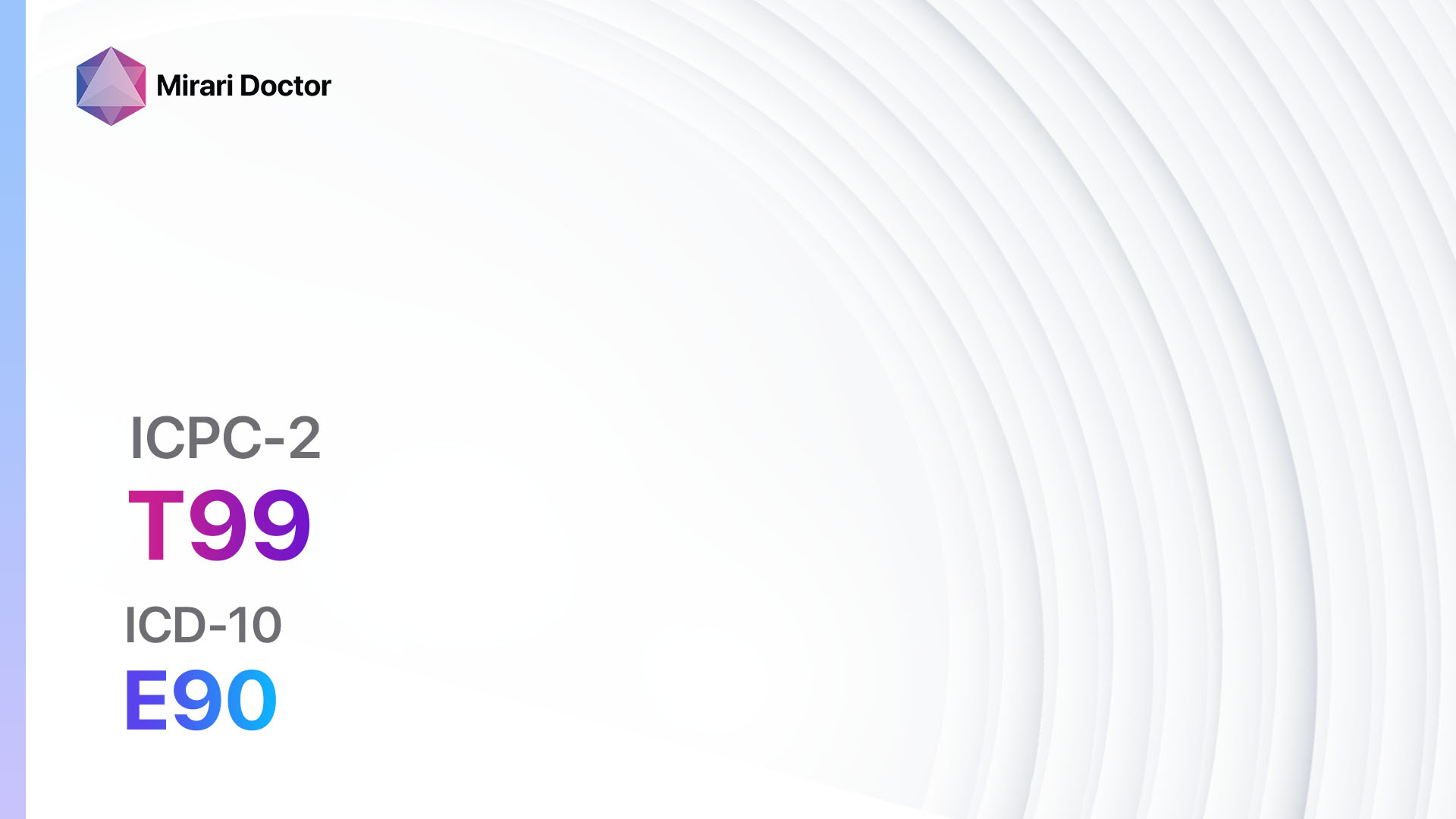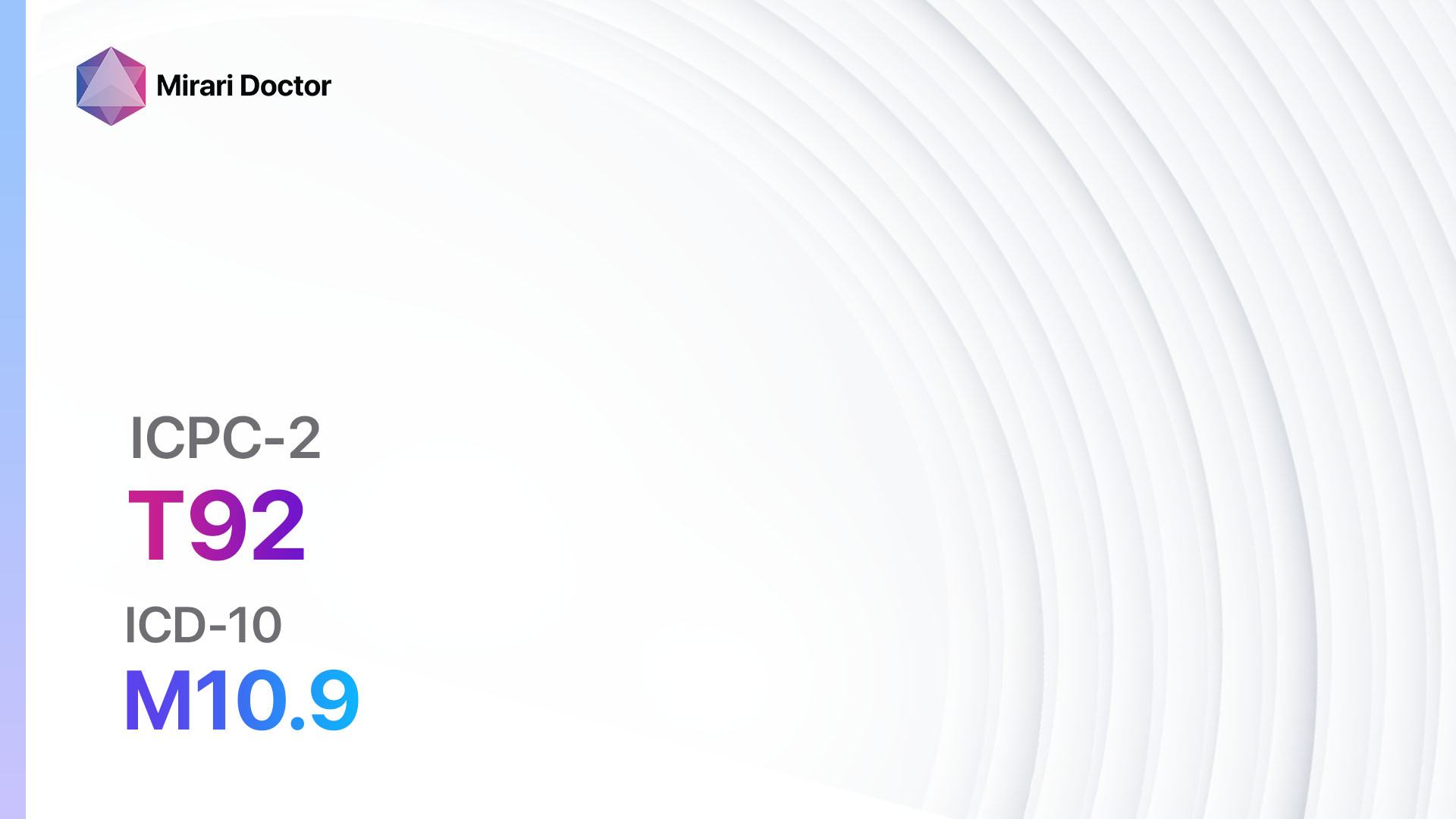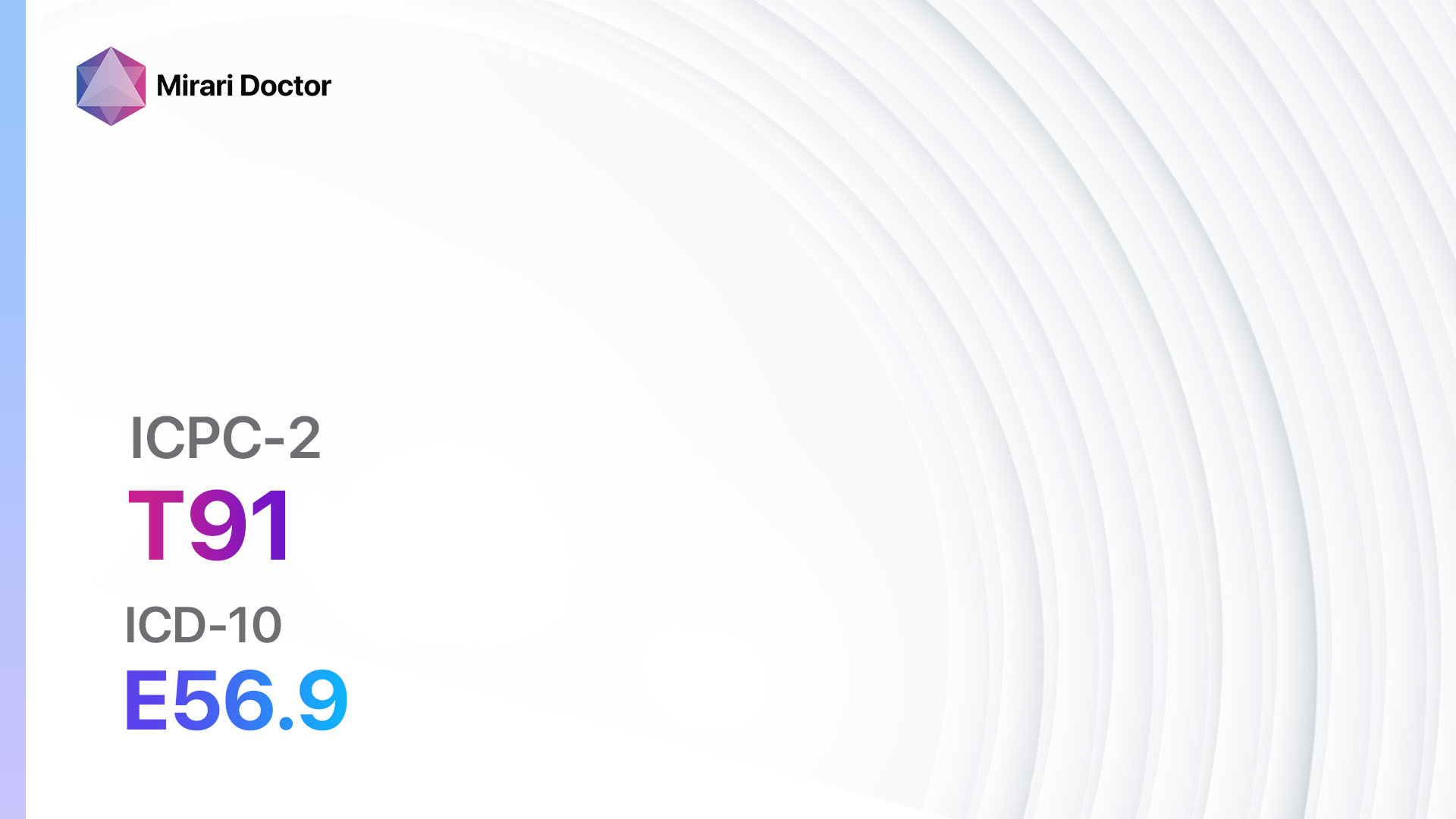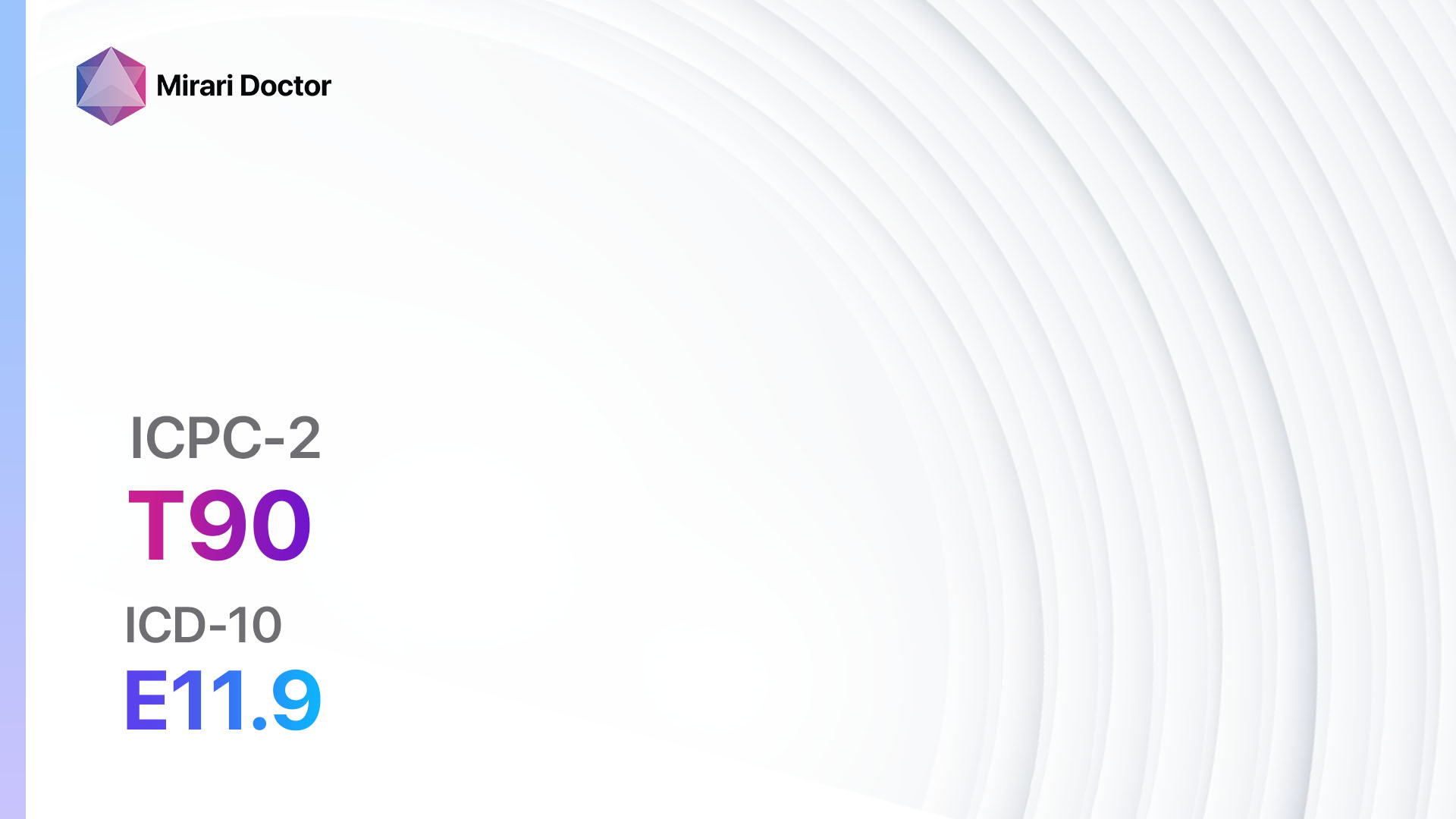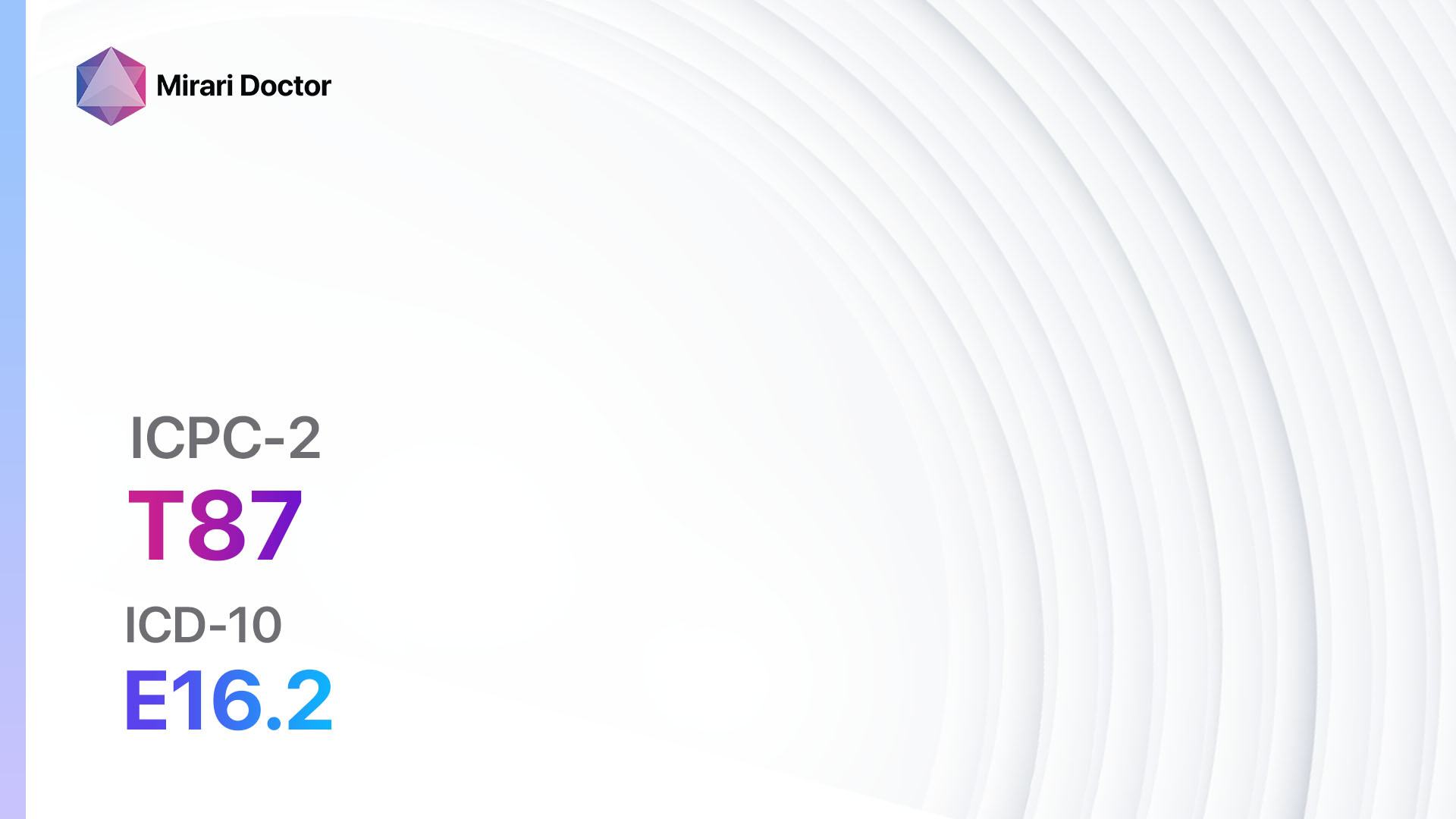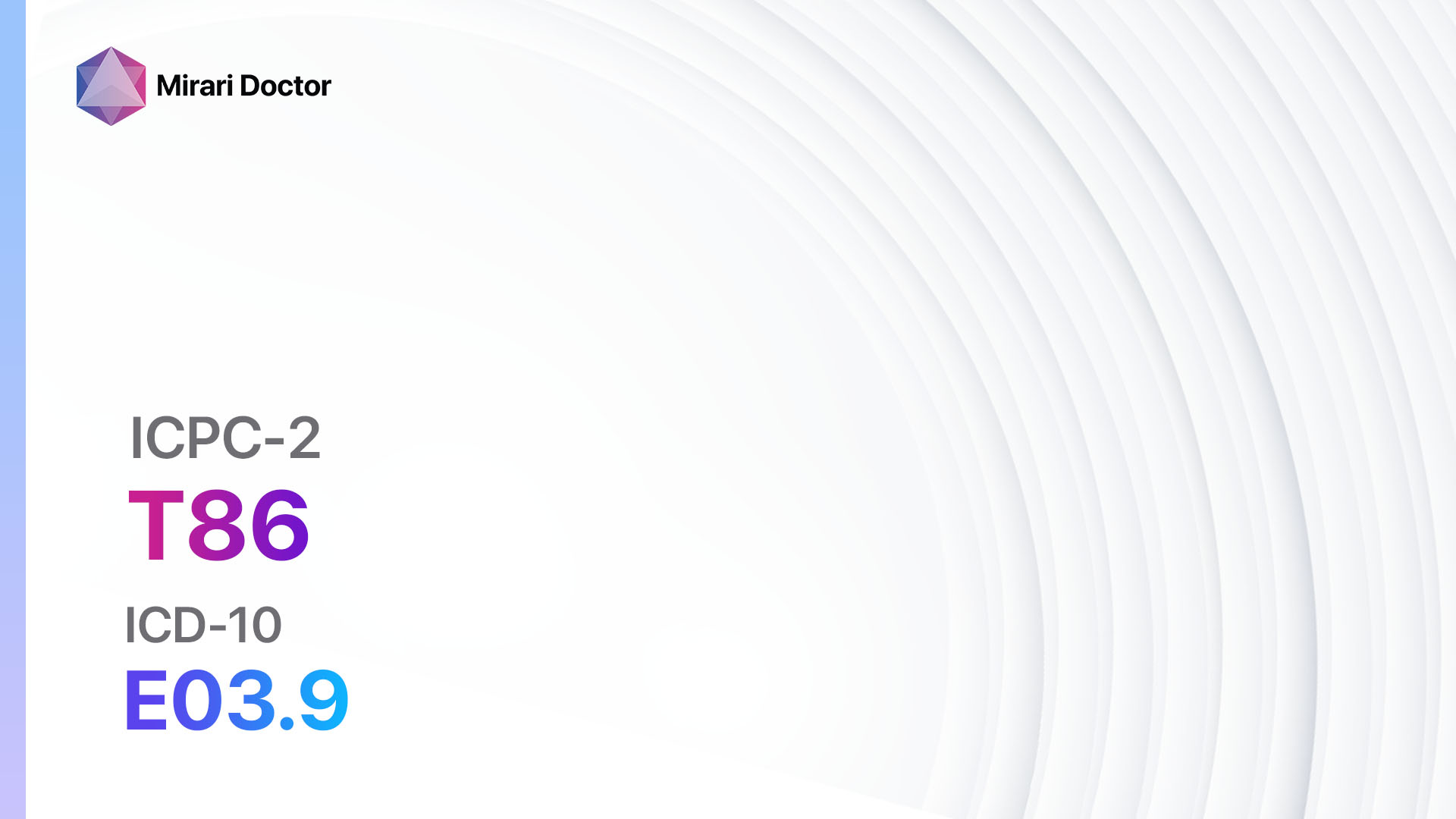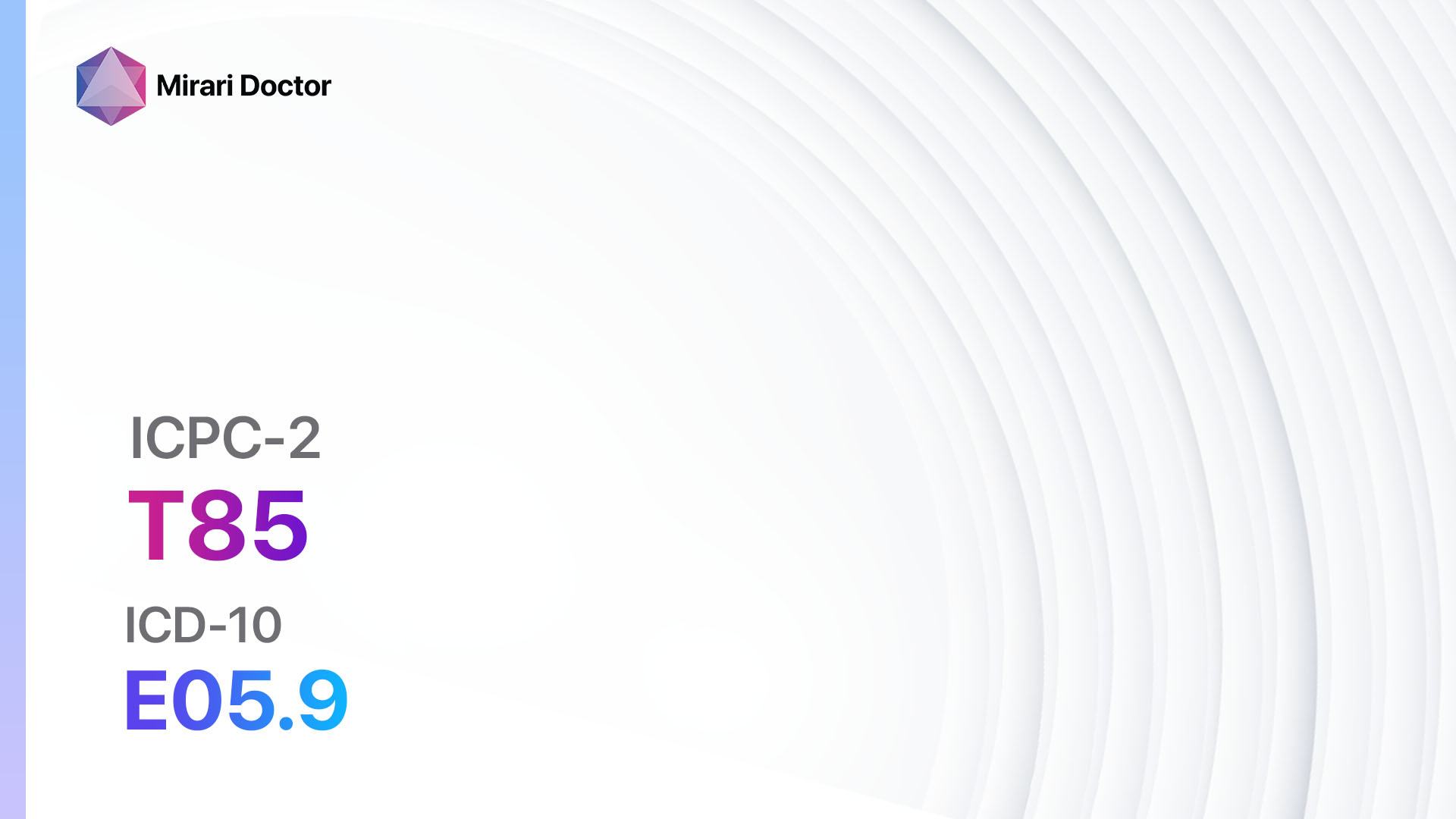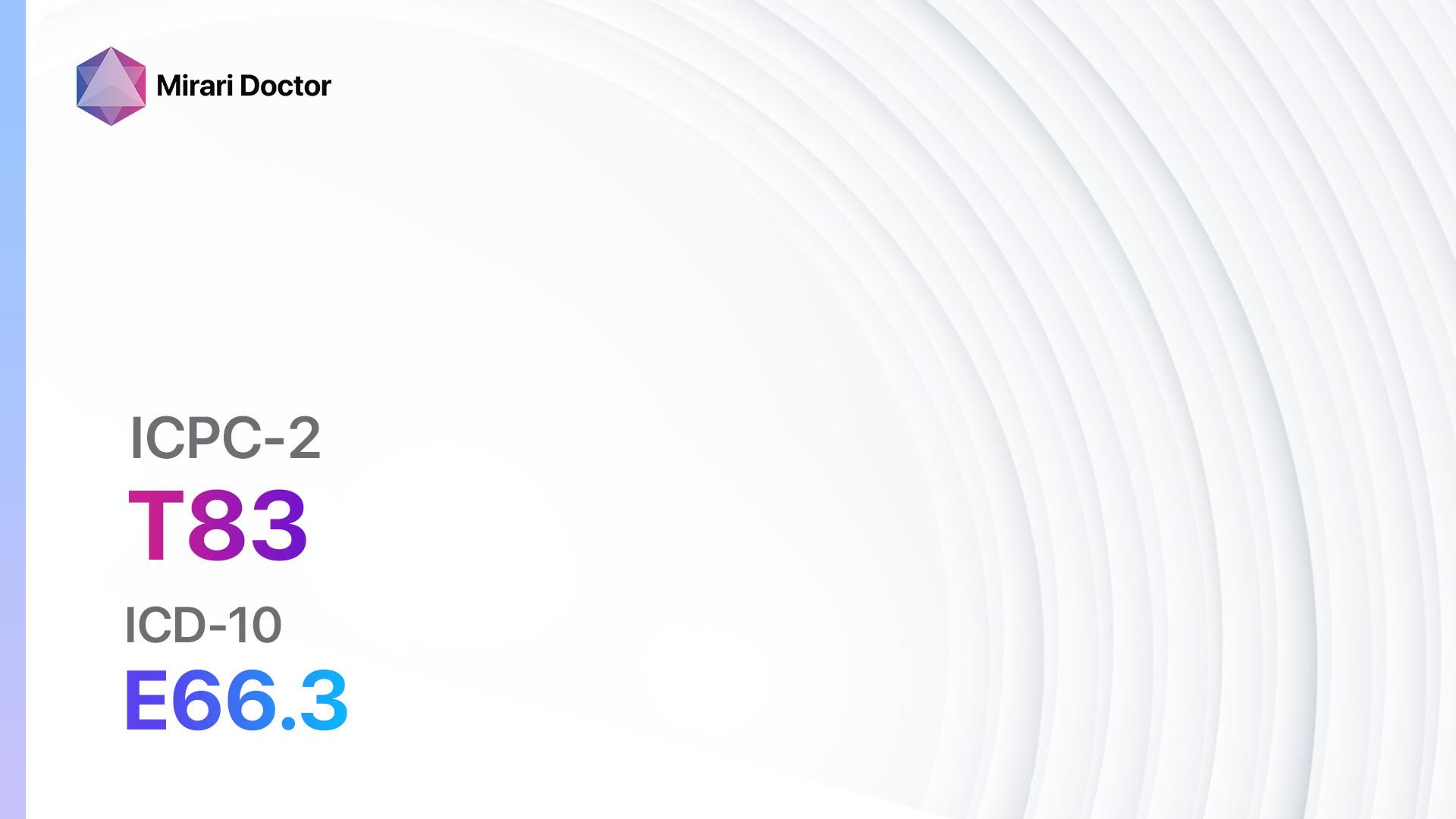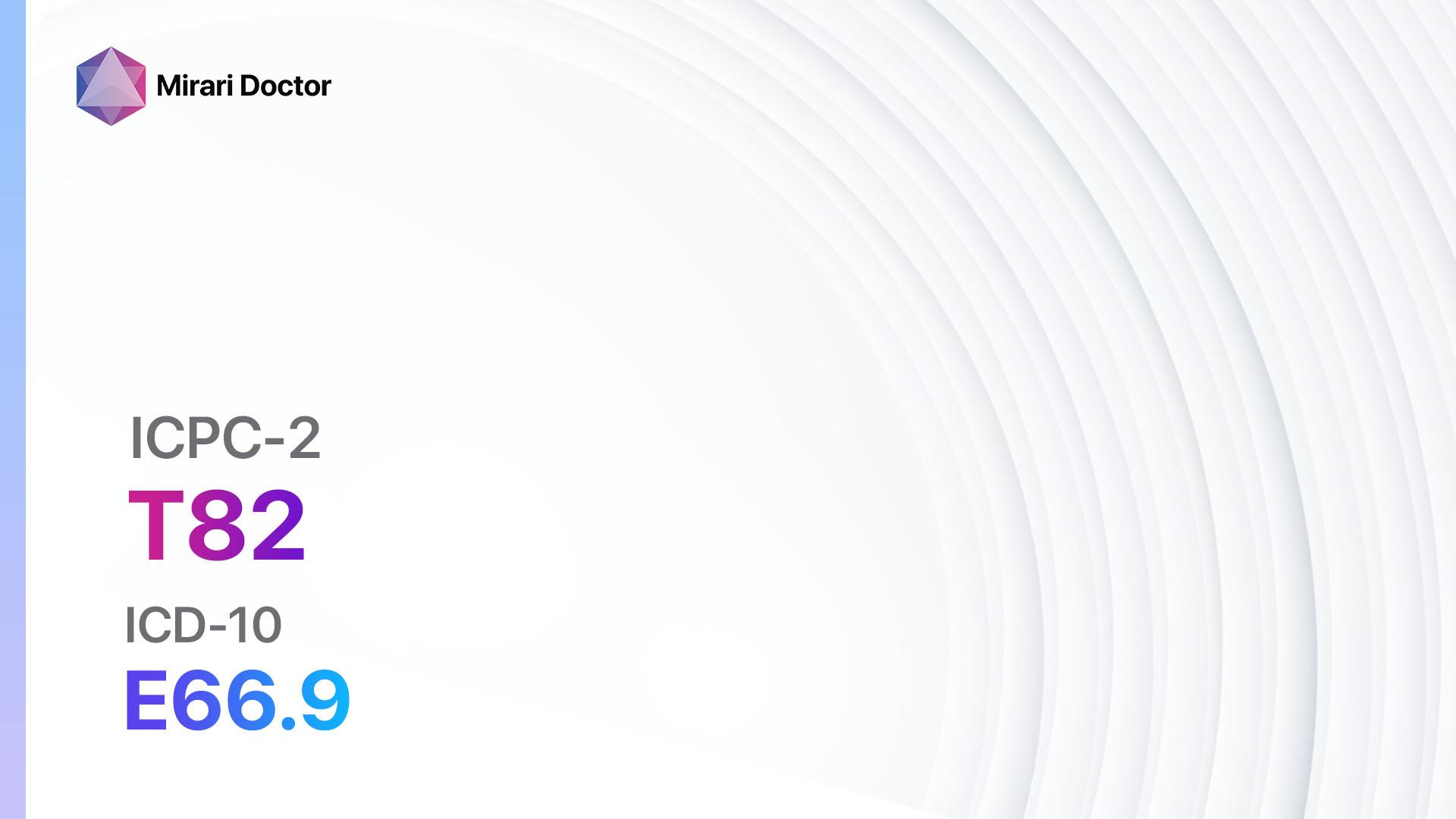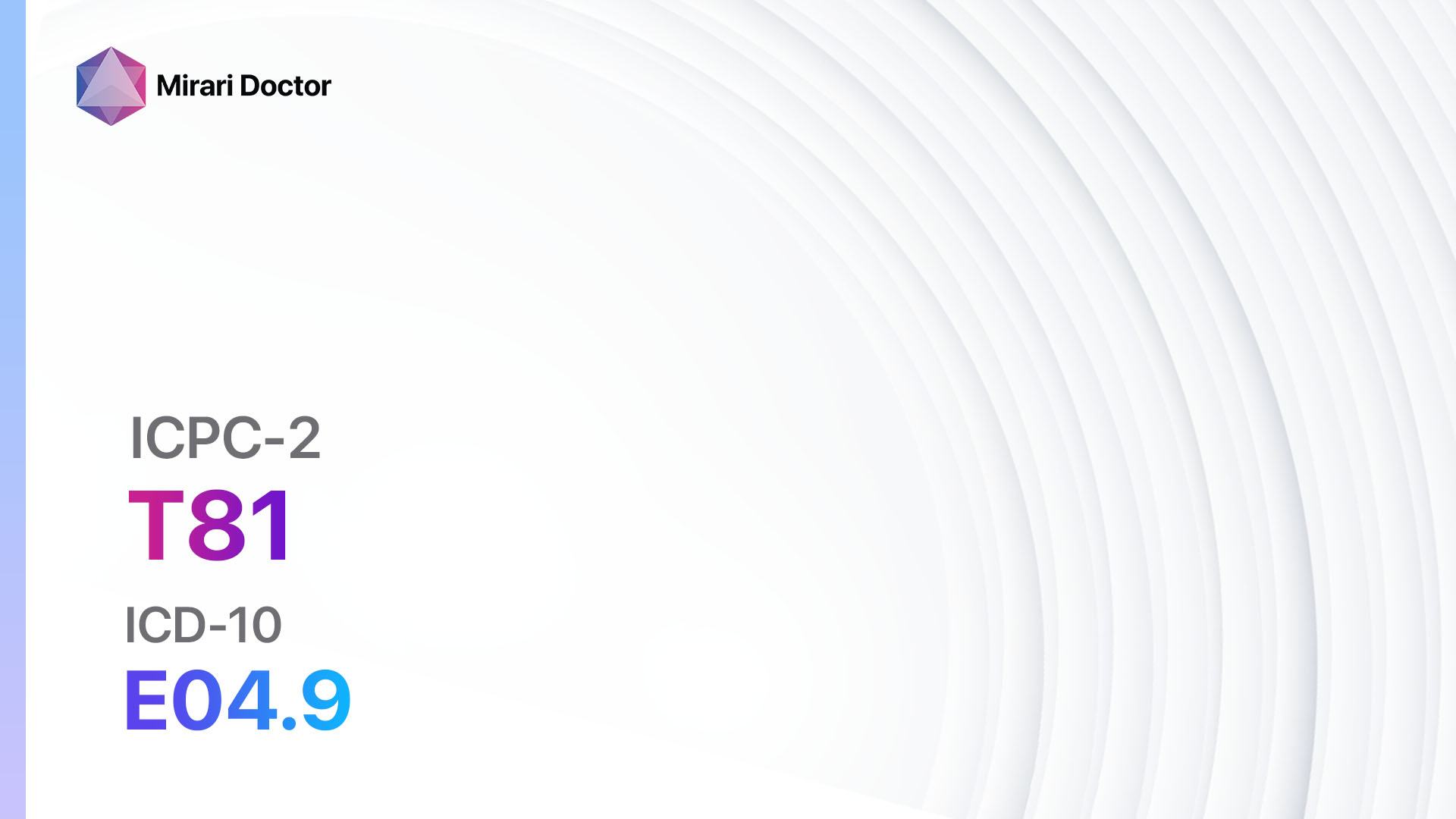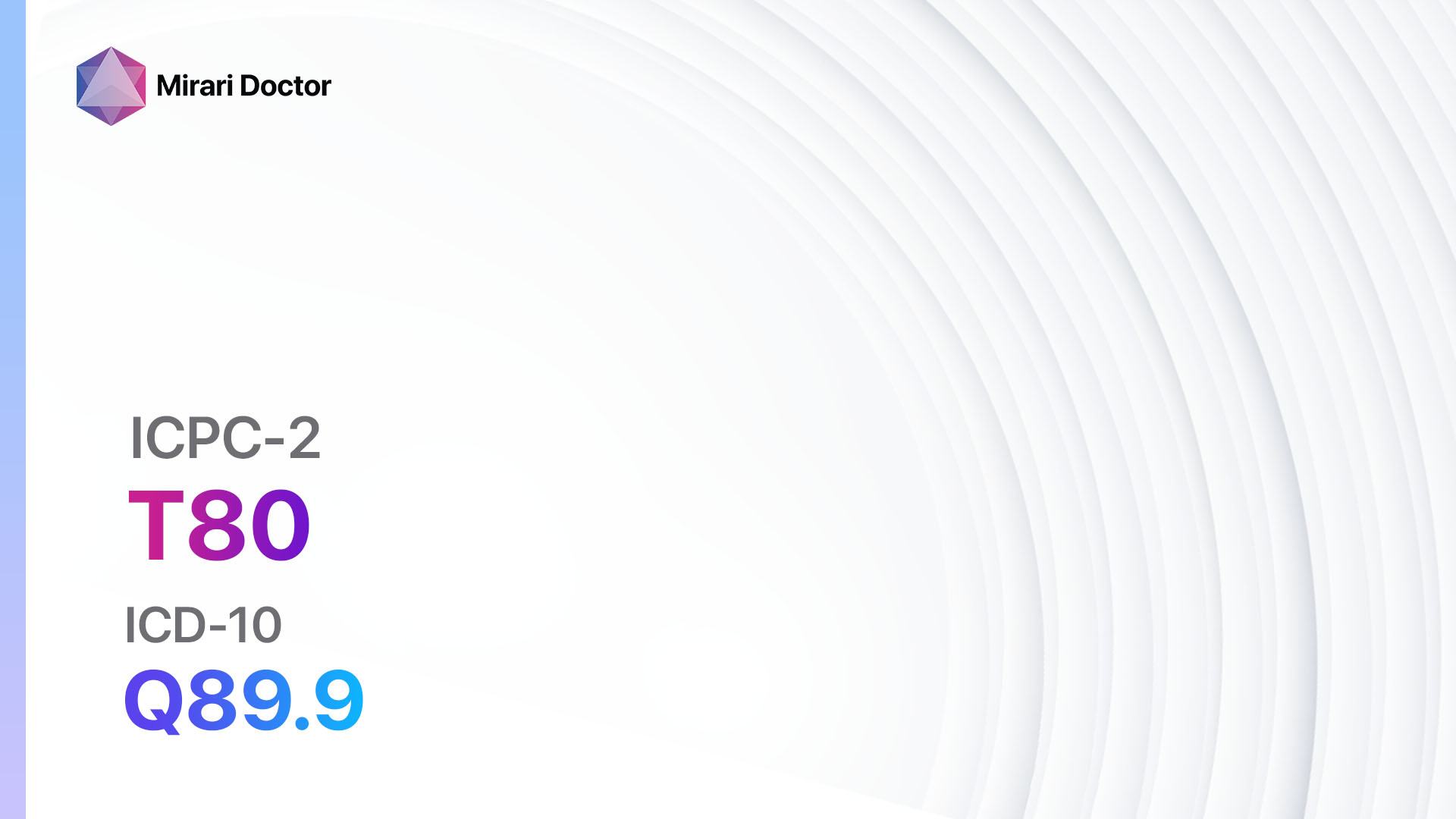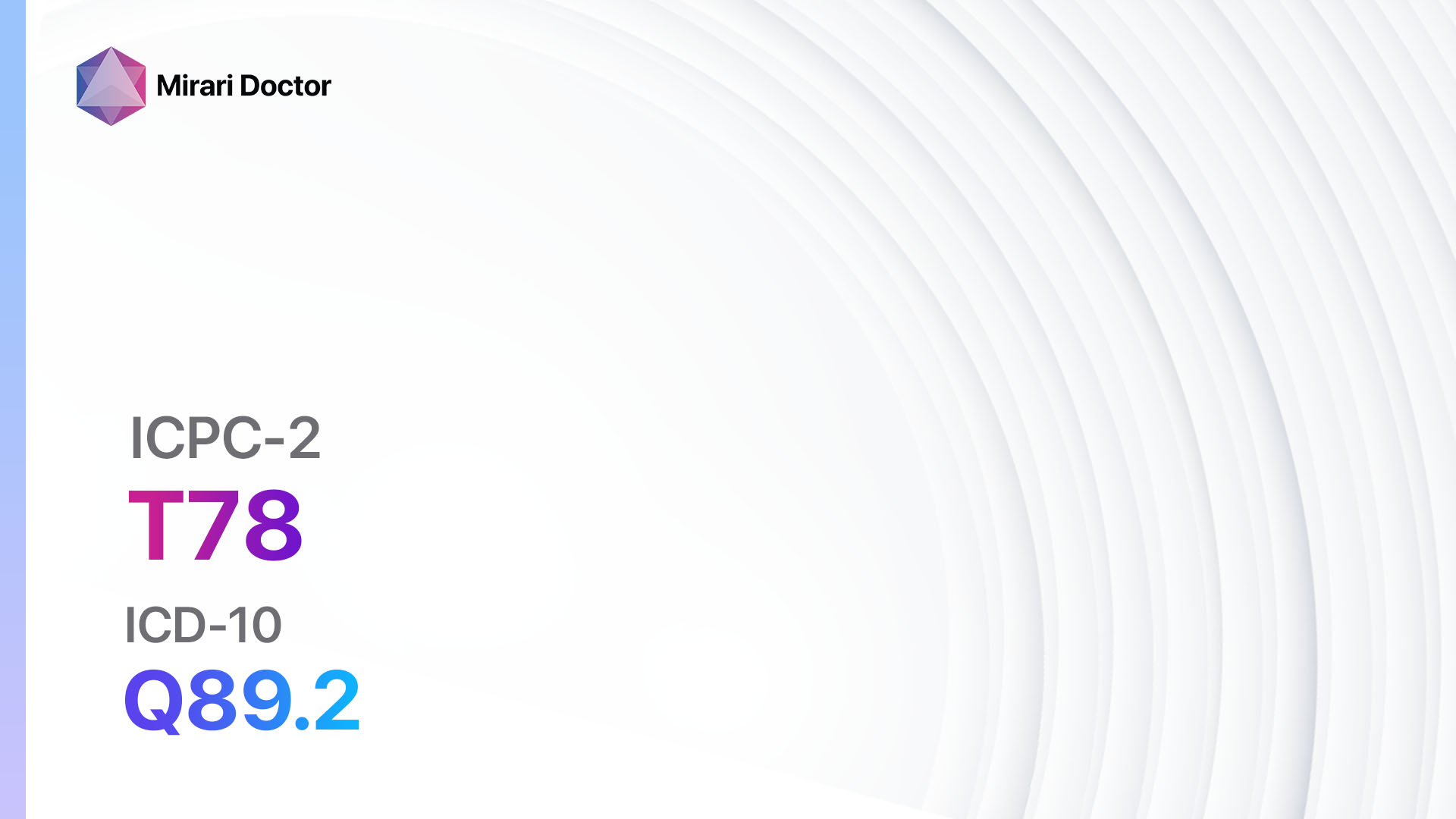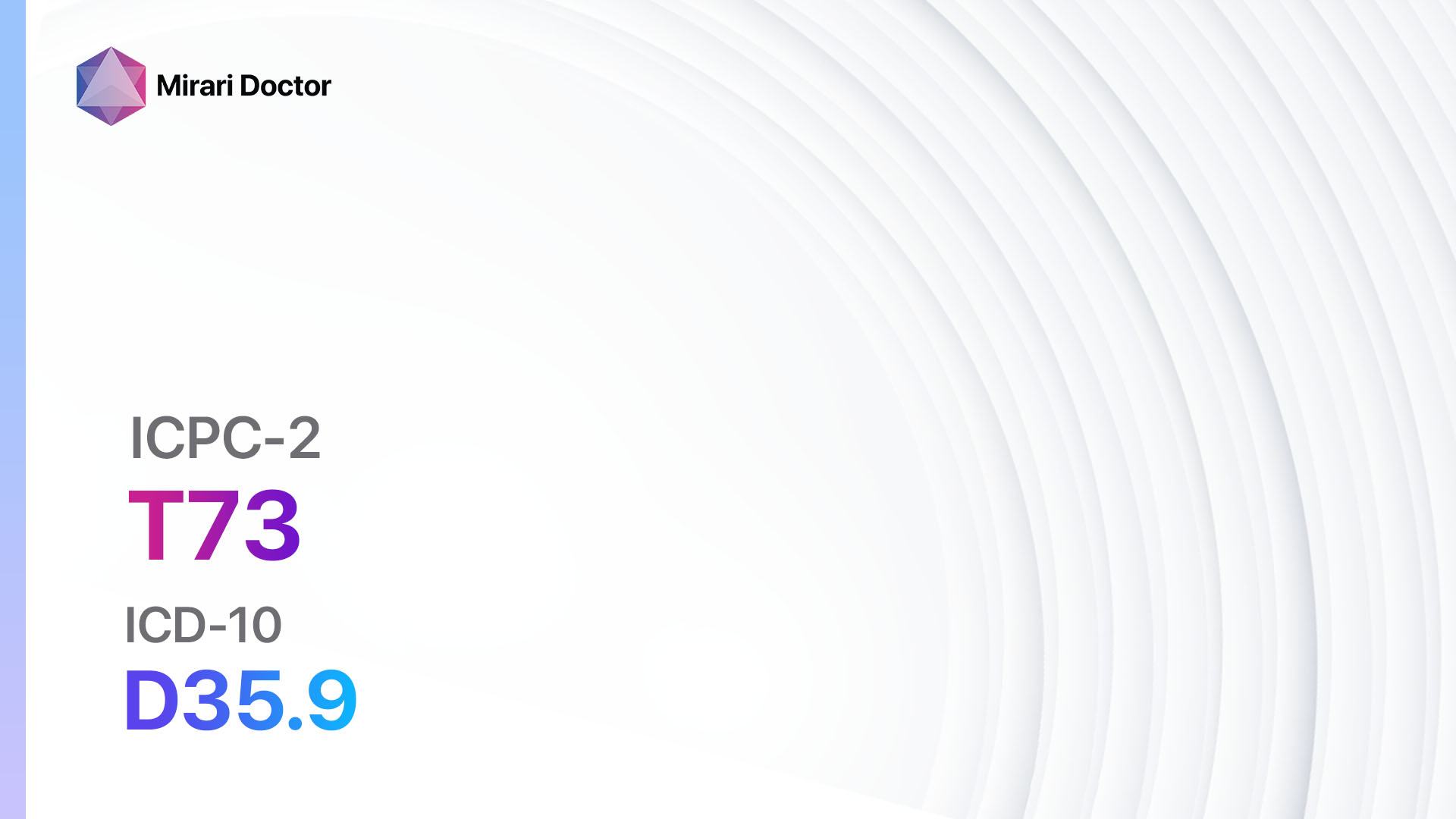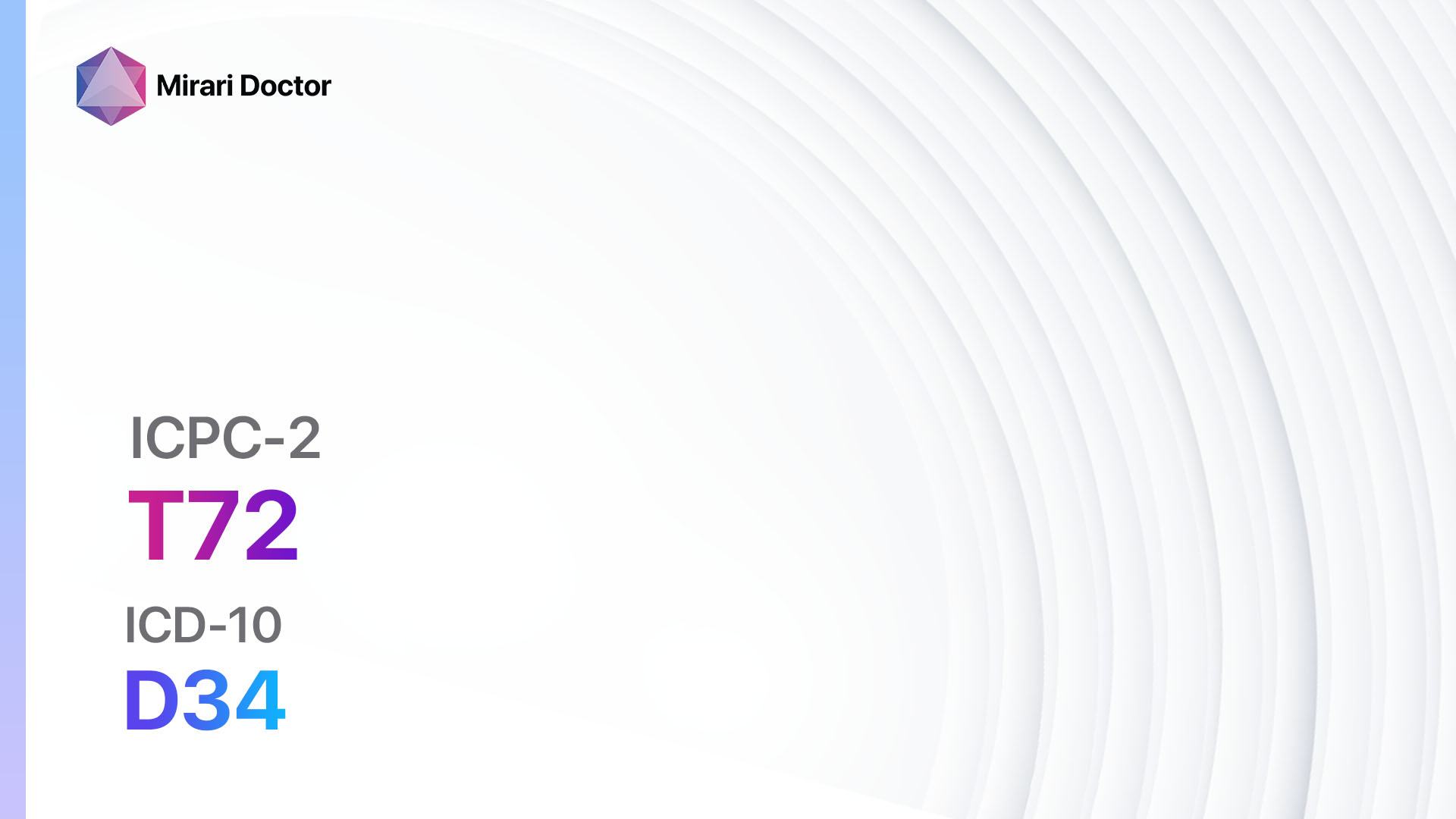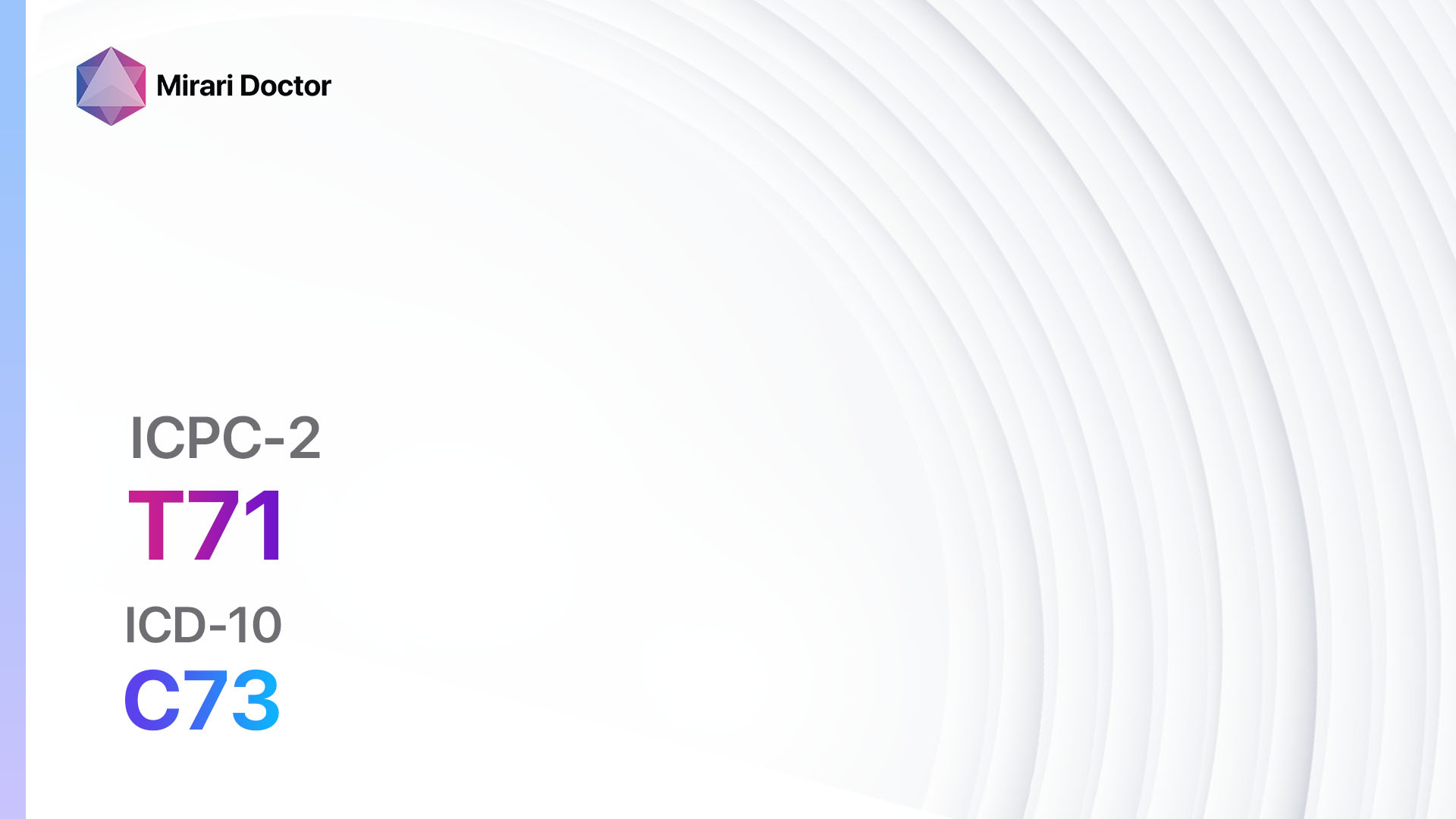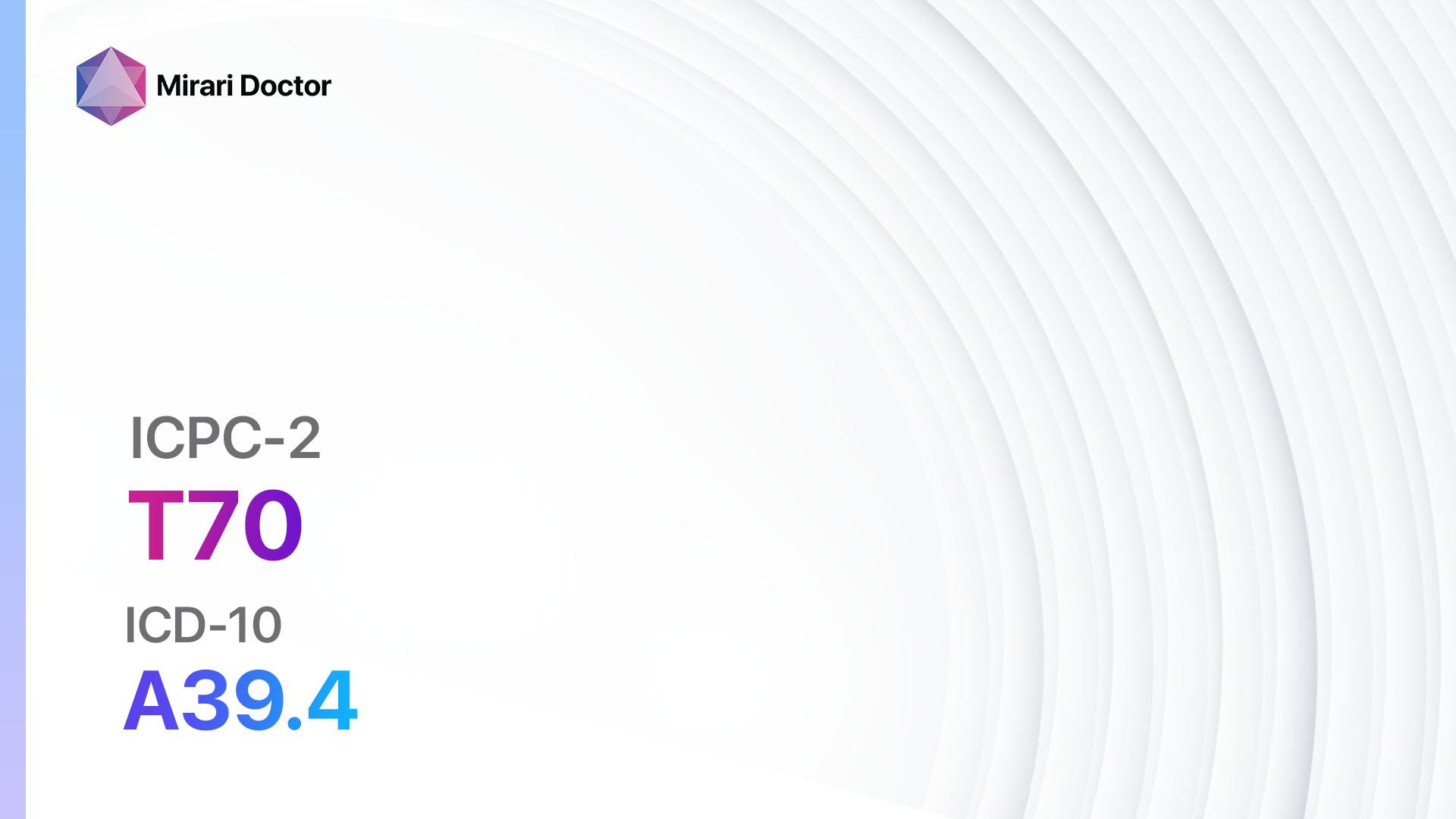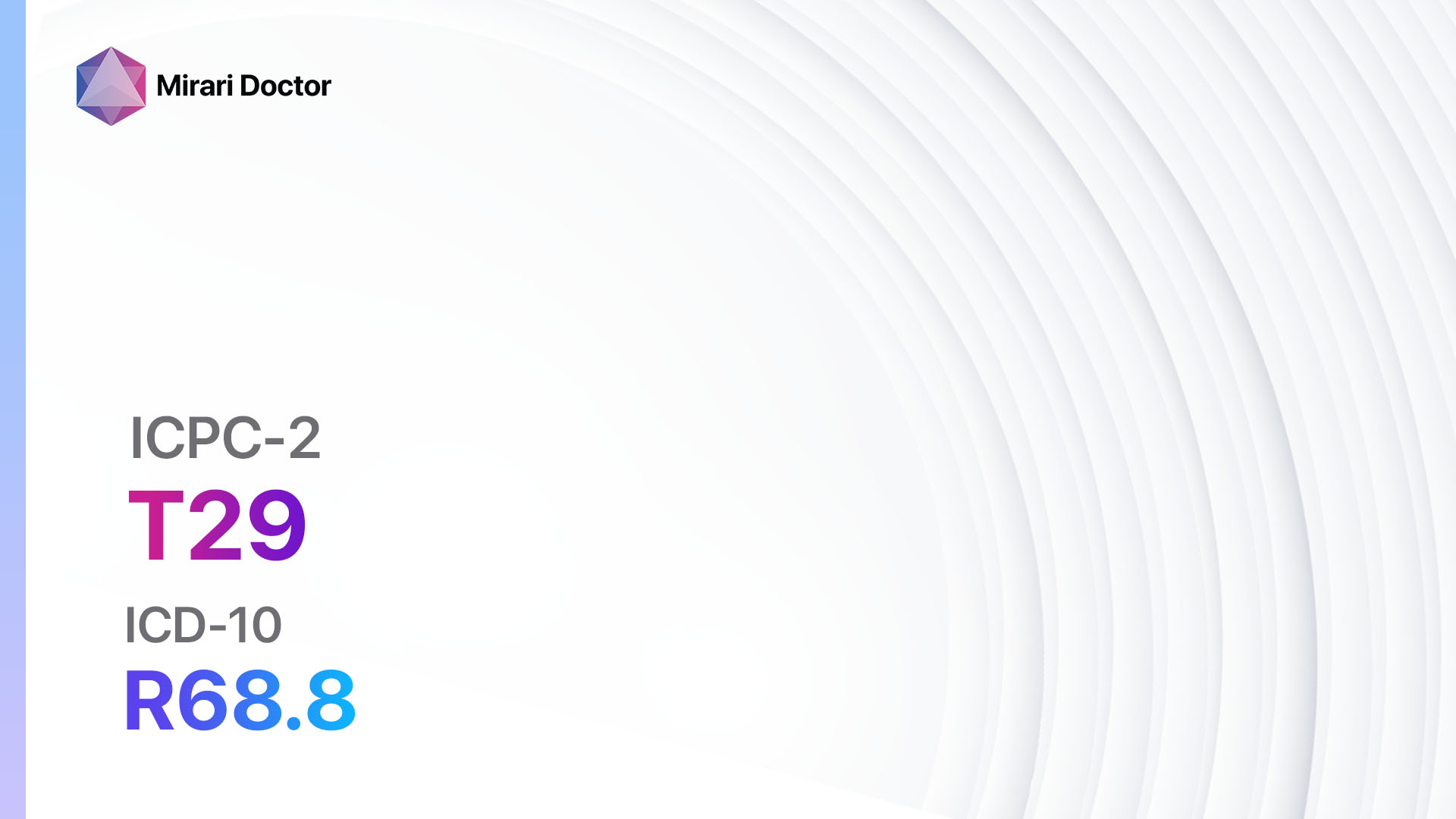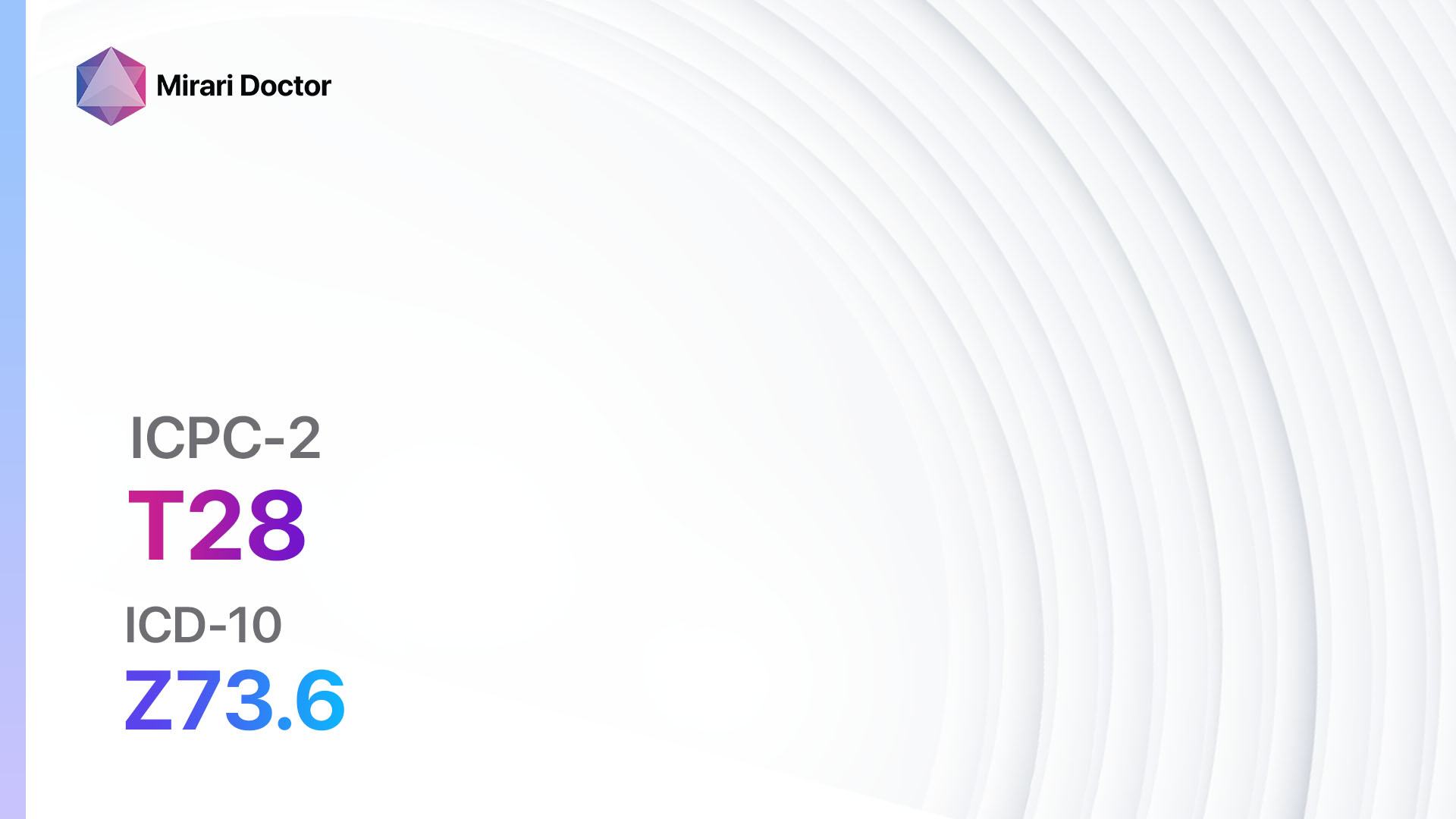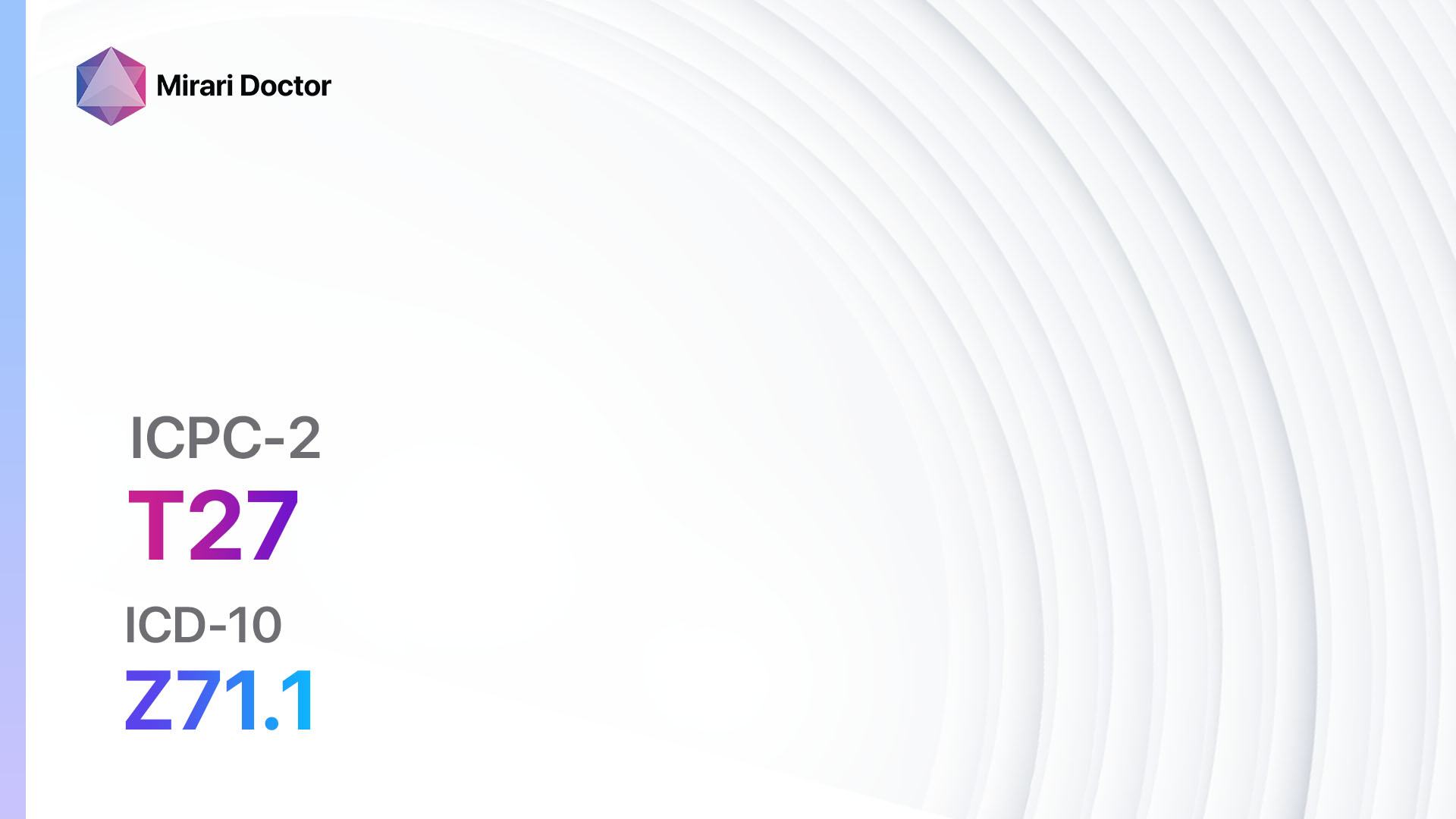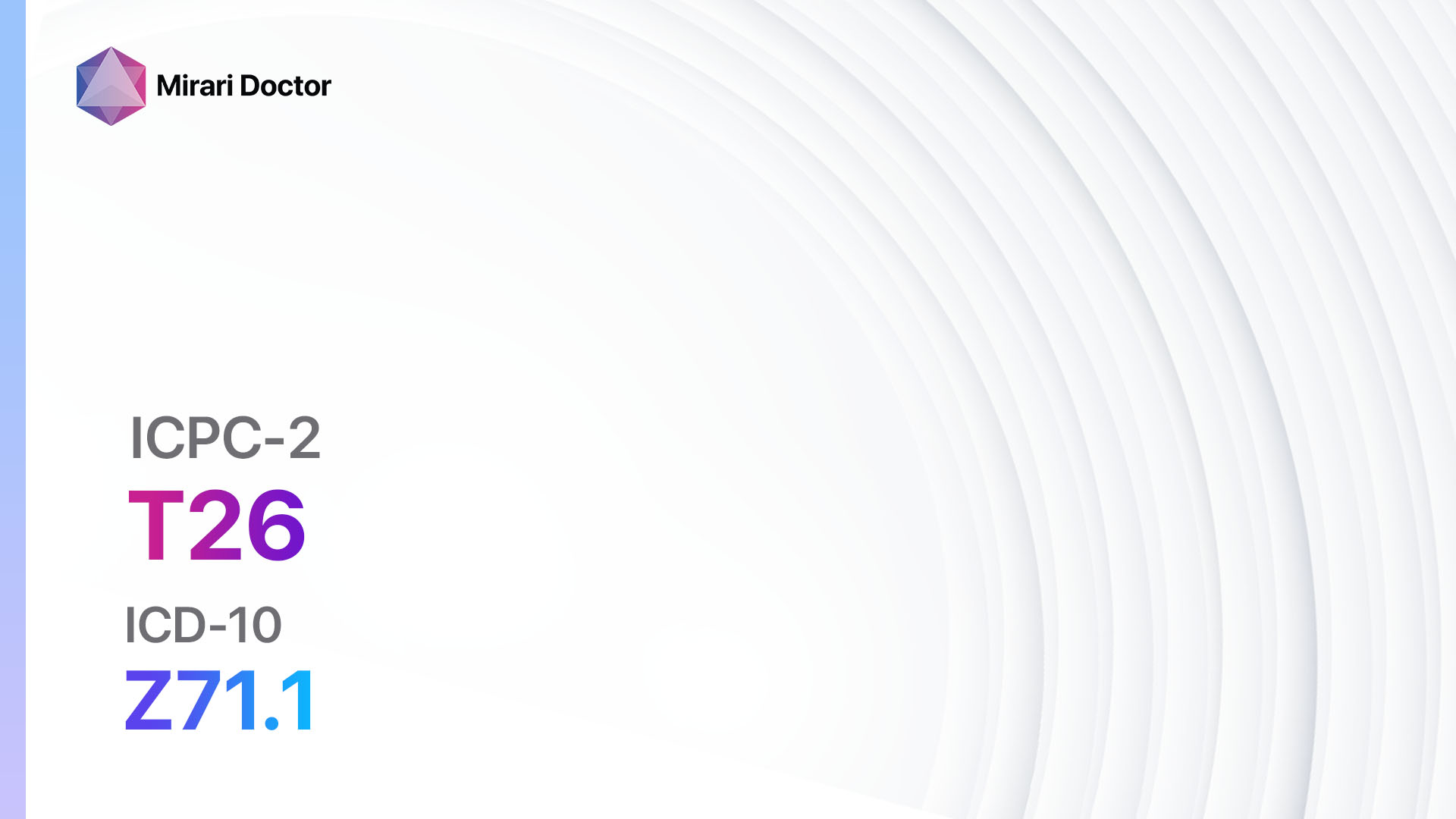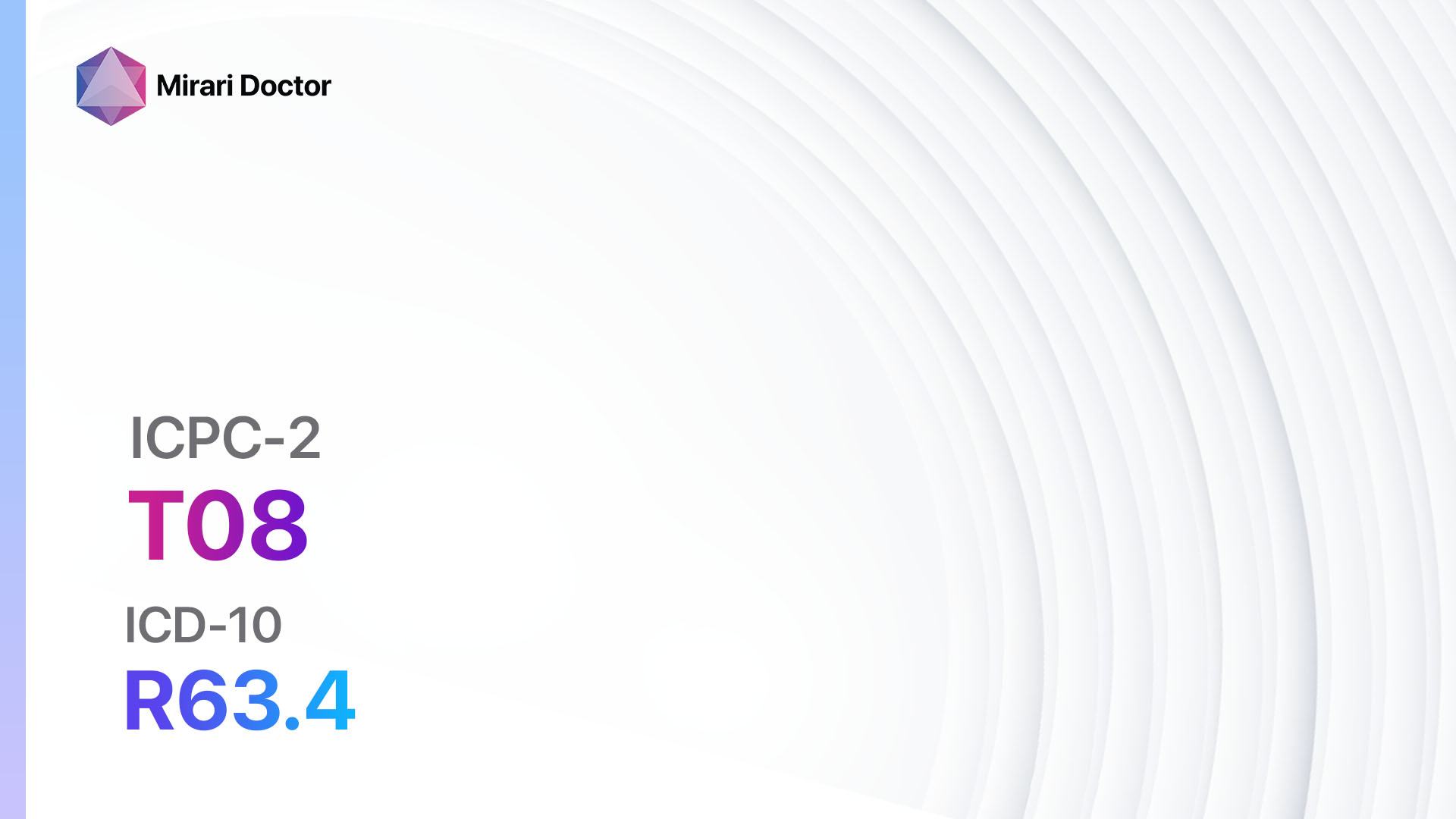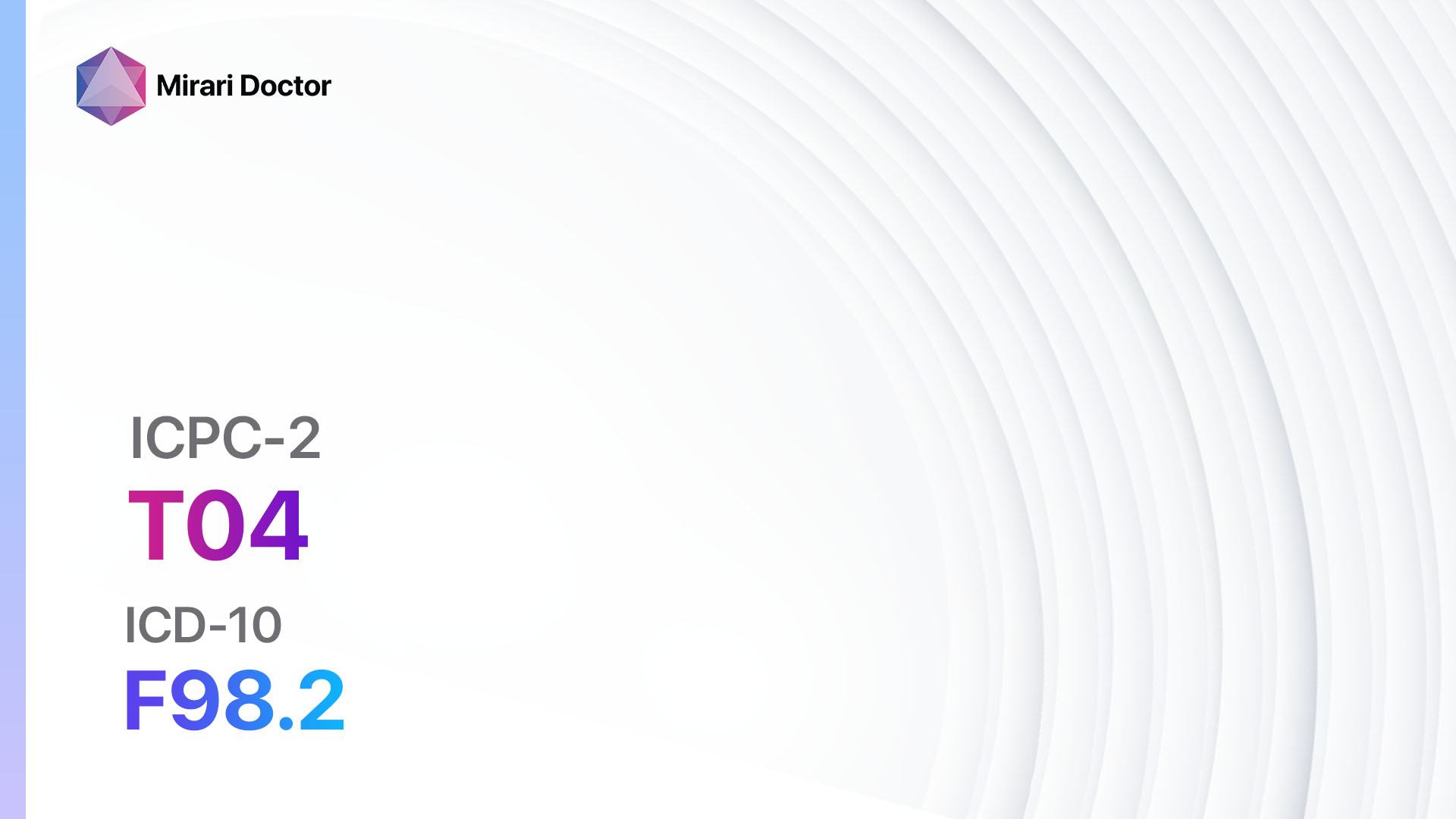
Introduction
Feeding problems in infants and children can have significant impacts on their growth, development, and overall health[1]. It is important to identify and address these issues to ensure proper nutrition and well-being[2]. This guide aims to provide healthcare professionals with a comprehensive approach to diagnosing and managing feeding problems in infants and children.
Codes
- ICPC-2 Code: T04 Feeding problem infant/child[3]
- ICD-10 Code: F98.2 Feeding disorder of infancy and childhood[4]
Symptoms
- Poor weight gain: Infants or children may not gain weight at an appropriate rate for their age[5].
- Refusal to eat: Infants or children may consistently refuse to eat or have difficulty initiating or maintaining feeding[6].
- Vomiting or regurgitation: Infants or children may experience frequent vomiting or regurgitation of food[7].
- Choking or gagging: Infants or children may exhibit choking or gagging during feeding[8].
- Coughing or wheezing: Infants or children may cough or wheeze during or after feeding[9].
- Excessive crying or fussiness: Infants or children may exhibit excessive crying or fussiness during or after feeding[10].
Causes
- Gastroesophageal reflux: The backward flow of stomach acid into the esophagus can cause feeding difficulties and discomfort.
- Oral motor dysfunction: Weakness or coordination problems in the muscles used for feeding can lead to difficulties in sucking, swallowing, and chewing.
- Sensory processing issues: Some infants or children may have sensory sensitivities that make feeding challenging.
- Structural abnormalities: Certain structural abnormalities in the mouth, throat, or gastrointestinal tract can interfere with feeding.
- Medical conditions: Feeding problems can be associated with underlying medical conditions such as gastrointestinal disorders, respiratory conditions, or neurological disorders.
Diagnostic Steps
Medical History
- Obtain a detailed medical history, including information about the infant or child’s feeding patterns, growth, and development.
- Inquire about any previous medical conditions or interventions that may be relevant to the feeding problem.
- Assess for any risk factors, such as prematurity or a history of neonatal intensive care unit (NICU) stay.
Physical Examination
- Perform a thorough physical examination, including an assessment of the infant or child’s oral cavity, throat, and gastrointestinal system.
- Look for any signs of structural abnormalities or oral motor dysfunction.
- Evaluate the infant or child’s overall growth and development.
Laboratory Tests
- Complete blood count (CBC): To assess for any signs of infection or anemia.
- Comprehensive metabolic panel (CMP): To evaluate electrolyte levels and liver function.
- Allergy testing: If there is suspicion of food allergies or intolerances.
- Stool analysis: To check for any signs of malabsorption or gastrointestinal inflammation.
Diagnostic Imaging
- Upper gastrointestinal (GI) series: A radiographic examination to evaluate the structure and function of the upper GI tract.
- Barium swallow study: A fluoroscopic examination to assess swallowing function and detect any abnormalities.
- Esophageal pH monitoring: To measure the amount of acid reflux in the esophagus over a 24-hour period.
Other Tests
- Videofluoroscopic swallow study: A specialized imaging test to evaluate swallowing function and detect any abnormalities.
- Feeding evaluation by a speech-language pathologist or occupational therapist: To assess oral motor function and provide recommendations for feeding interventions.
- Consultation with a pediatric gastroenterologist or other specialists: If there is suspicion of an underlying medical condition contributing to the feeding problem.
Follow-up and Patient Education
- Schedule regular follow-up appointments to monitor the infant or child’s progress and adjust interventions as needed.
- Provide education to parents or caregivers on appropriate feeding techniques, positioning, and strategies to promote successful feeding.
- Refer to appropriate support services, such as feeding clinics or early intervention programs, if necessary.
Possible Interventions
Traditional Interventions
Medications:
Top 5 drugs for Feeding problem of infant/child:
- Proton pump inhibitors (e.g., Omeprazole, Lansoprazole):
- Cost: Generic versions can be $10-$50/month.
- Contraindications: Hypersensitivity to the medication.
- Side effects: Headache, diarrhea, abdominal pain.
- Severe side effects: Clostridium difficile infection, bone fractures.
- Drug interactions: Warfarin, clopidogrel.
- Warning: Long-term use may increase the risk of certain infections and nutrient deficiencies.
- H2 blockers (e.g., Ranitidine, Famotidine):
- Cost: Generic versions can be $10-$30/month.
- Contraindications: Hypersensitivity to the medication.
- Side effects: Headache, dizziness, diarrhea.
- Severe side effects: Blood disorders, liver problems.
- Drug interactions: Warfarin, phenytoin.
- Warning: Rare cases of allergic reactions and severe skin reactions have been reported.
- Motility agents (e.g., Metoclopramide, Domperidone):
- Cost: Generic versions can be $10-$30/month.
- Contraindications: Gastrointestinal bleeding, mechanical obstruction.
- Side effects: Restlessness, drowsiness, diarrhea.
- Severe side effects: Tardive dyskinesia, neuroleptic malignant syndrome.
- Drug interactions: Antipsychotics, antidepressants.
- Warning: Long-term use may increase the risk of movement disorders.
- Appetite stimulants (e.g., Cyproheptadine, Mirtazapine):
- Cost: Generic versions can be $10-$30/month.
- Contraindications: Glaucoma, urinary retention.
- Side effects: Drowsiness, increased appetite, dry mouth.
- Severe side effects: Serotonin syndrome, agranulocytosis.
- Drug interactions: Monoamine oxidase inhibitors, sedatives.
- Warning: Use with caution in patients with a history of seizures or cardiovascular disease.
- Probiotics (e.g., Lactobacillus, Bifidobacterium):
- Cost: Varies depending on the specific product.
- Contraindications: None reported.
- Side effects: Gas, bloating, diarrhea.
- Severe side effects: None reported.
- Drug interactions: None reported.
- Warning: Quality and efficacy of probiotic products may vary.
Alternative Drugs:
- Multivitamin and mineral supplements: May be recommended if there are concerns about nutrient deficiencies.
- Digestive enzymes: Can help improve digestion and absorption of nutrients.
- Antiemetics: Used to manage nausea and vomiting associated with feeding problems.
- Antidepressants: In some cases, antidepressant medications may be prescribed to manage feeding difficulties associated with underlying mental health conditions.
- Antihistamines: Can help manage symptoms of food allergies or intolerances.
Surgical Procedures:
- Gastrostomy tube placement: In severe cases of feeding problems, a surgical procedure may be necessary to place a feeding tube directly into the stomach. Cost: $10,000 to $30,000.
- Tongue-tie release: If a tongue-tie is identified as a contributing factor to feeding difficulties, a simple surgical procedure can be performed to release the tongue-tie. Cost: $500 to $2,000.
Alternative Interventions
- Oral motor therapy: Therapy focused on improving oral motor skills and coordination. Cost: $100-$200 per session.
- Feeding therapy: A specialized therapy program designed to address feeding difficulties and improve feeding skills. Cost: $100-$200 per session.
- Nutritional counseling: Working with a registered dietitian to develop a personalized feeding plan and address any nutrient deficiencies. Cost: $100-$200 per session.
- Behavioral interventions: Strategies to address behavioral issues related to feeding, such as food aversions or sensory sensitivities. Cost: $100-$200 per session.
- Acupuncture: May help improve appetite and reduce stress or anxiety related to feeding difficulties. Cost: $60-$120 per session.
Lifestyle Interventions
- Positioning techniques: Modifying the infant or child’s positioning during feeding to improve comfort and swallowing. Cost: None.
- Texture modifications: Adjusting the texture of foods to make them easier to swallow. Cost: None.
- Feeding schedules: Implementing a structured feeding schedule to establish routine and promote appetite. Cost: None.
- Parent education and support: Providing parents or caregivers with education and support to address feeding difficulties. Cost: None.
- Mealtime environment modifications: Creating a calm and positive mealtime environment to reduce stress and anxiety. Cost: None.
It is important to note that the cost ranges provided are approximate and may vary depending on the location and availability of the interventions.
Mirari Cold Plasma Alternative Intervention
Understanding Mirari Cold Plasma
- Safe and Non-Invasive Treatment: Mirari Cold Plasma is a safe and non-invasive treatment option for various skin conditions. It does not require incisions, minimizing the risk of scarring, bleeding, or tissue damage.
- Efficient Extraction of Foreign Bodies: Mirari Cold Plasma facilitates the removal of foreign bodies from the skin by degrading and dissociating organic matter, allowing easier access and extraction.
- Pain Reduction and Comfort: Mirari Cold Plasma has a local analgesic effect, providing pain relief during the treatment, making it more comfortable for the patient.
- Reduced Risk of Infection: Mirari Cold Plasma has antimicrobial properties, effectively killing bacteria and reducing the risk of infection.
- Accelerated Healing and Minimal Scarring: Mirari Cold Plasma stimulates wound healing and tissue regeneration, reducing healing time and minimizing the formation of scars.
Mirari Cold Plasma Prescription
Video instructions for using Mirari Cold Plasma Device – T04 Feeding problem infant/child (ICD-10:F98.2)
| Mild | Moderate | Severe |
| Mode setting: 2 (Wound Healing) Location: 4 (Heart, Bile & Pancreas) Morning: 15 minutes, Evening: 15 minutes |
Mode setting: 2 (Wound Healing) Location: 4 (Heart, Bile & Pancreas) Morning: 30 minutes, Lunch: 30 minutes, Evening: 30 minutes |
Mode setting: 2 (Wound Healing) Location: 4 (Heart, Bile & Pancreas) Morning: 30 minutes, Lunch: 30 minutes, Evening: 30 minutes |
| Mode setting: 7 (Immunotherapy) Location: 1 (Sacrum) Morning: 15 minutes, Evening: 15 minutes |
Mode setting: 7 (Immunotherapy) Location: 1 (Sacrum) Morning: 30 minutes, Lunch: 30 minutes, Evening: 30 minutes |
Mode setting: 7 (Immunotherapy) Location: 1 (Sacrum) Morning: 30 minutes, Lunch: 30 minutes, Evening: 30 minutes |
| Mode setting: 7 (Immunotherapy) Location: 4 (Heart, Bile & Pancreas) Morning: 15 minutes, Evening: 15 minutes |
Mode setting: 7 (Immunotherapy) Location: 4 (Heart, Bile & Pancreas) Morning: 30 minutes, Lunch: 30 minutes, Evening: 30 minutes |
Mode setting: 7 (Immunotherapy) Location: 4 (Heart, Bile & Pancreas) Morning: 30 minutes, Lunch: 30 minutes, Evening: 30 minutes |
| Total Morning: 45 minutes approx. $7.50 USD, Evening: 45 minutes approx. $7.50 USD |
Total Morning: 90 minutes approx. $15 USD, Lunch: 90 minutes approx. $15 USD, Evening: 90 minutes approx. $15 USD |
Total Morning: 90 minutes approx. $15 USD, Lunch: 90 minutes approx. $15 USD, Evening: 90 minutes approx. $15 USD |
| Usual treatment for 7-60 days approx. $105 USD – $900 USD | Usual treatment for 6-8 weeks approx. $1,890 USD – $2,520 USD |
Usual treatment for 3-6 months approx. $4,050 USD – $8,100 USD
|
 |
|
Use the Mirari Cold Plasma device to treat Feeding problem of infant/child effectively.
WARNING: MIRARI COLD PLASMA IS DESIGNED FOR THE HUMAN BODY WITHOUT ANY ARTIFICIAL OR THIRD PARTY PRODUCTS. USE OF OTHER PRODUCTS IN COMBINATION WITH MIRARI COLD PLASMA MAY CAUSE UNPREDICTABLE EFFECTS, HARM OR INJURY. PLEASE CONSULT A MEDICAL PROFESSIONAL BEFORE COMBINING ANY OTHER PRODUCTS WITH USE OF MIRARI.
Step 1: Cleanse the Skin
- Start by cleaning the affected area of the skin with a gentle cleanser or mild soap and water. Gently pat the area dry with a clean towel.
Step 2: Prepare the Mirari Cold Plasma device
- Ensure that the Mirari Cold Plasma device is fully charged or has fresh batteries as per the manufacturer’s instructions. Make sure the device is clean and in good working condition.
- Switch on the Mirari device using the power button or by following the specific instructions provided with the device.
- Some Mirari devices may have adjustable settings for intensity or treatment duration. Follow the manufacturer’s instructions to select the appropriate settings based on your needs and the recommended guidelines.
Step 3: Apply the Device
- Place the Mirari device in direct contact with the affected area of the skin. Gently glide or hold the device over the skin surface, ensuring even coverage of the area experiencing.
- Slowly move the Mirari device in a circular motion or follow a specific pattern as indicated in the user manual. This helps ensure thorough treatment coverage.
Step 4: Monitor and Assess:
- Keep track of your progress and evaluate the effectiveness of the Mirari device in managing your Feeding problem of infant/child. If you have any concerns or notice any adverse reactions, consult with your health care professional.
Note
This guide is for informational purposes only and should not replace the advice of a medical professional. Always consult with your healthcare provider or a qualified medical professional for personal advice, diagnosis, or treatment. Do not solely rely on the information presented here for decisions about your health. Use of this information is at your own risk. The authors of this guide, nor any associated entities or platforms, are not responsible for any potential adverse effects or outcomes based on the content.
Mirari Cold Plasma System Disclaimer
- Purpose: The Mirari Cold Plasma System is a Class 2 medical device designed for use by trained healthcare professionals. It is registered for use in Thailand and Vietnam. It is not intended for use outside of these locations.
- Informational Use: The content and information provided with the device are for educational and informational purposes only. They are not a substitute for professional medical advice or care.
- Variable Outcomes: While the device is approved for specific uses, individual outcomes can differ. We do not assert or guarantee specific medical outcomes.
- Consultation: Prior to utilizing the device or making decisions based on its content, it is essential to consult with a Certified Mirari Tele-Therapist and your medical healthcare provider regarding specific protocols.
- Liability: By using this device, users are acknowledging and accepting all potential risks. Neither the manufacturer nor the distributor will be held accountable for any adverse reactions, injuries, or damages stemming from its use.
- Geographical Availability: This device has received approval for designated purposes by the Thai and Vietnam FDA. As of now, outside of Thailand and Vietnam, the Mirari Cold Plasma System is not available for purchase or use.
References
- Borowitz, K. C., & Borowitz, S. M. (2018). Feeding Problems in Infants and Children: Assessment and Etiology. Pediatric Clinics of North America, 65(1), 59-72.
- Kerzner, B., Milano, K., MacLean, W. C., Berall, G., Stuart, S., & Chatoor, I. (2015). A practical approach to classifying and managing feeding difficulties. Pediatrics, 135(2), 344-353.
- WONCA International Classification Committee. (1998). ICPC-2: International Classification of Primary Care. Oxford University Press.
- World Health Organization. (2016). International statistical classification of diseases and related health problems (10th revision, 5th ed.).
- Rybak, A. (2015). Organic and nonorganic feeding disorders. Annals of Nutrition and Metabolism, 66(Suppl. 5), 16-22.
- Manikam, R., & Perman, J. A. (2000). Pediatric feeding disorders. Journal of Clinical Gastroenterology, 30(1), 34-46.
- Rommel, N., De Meyer, A. M., Feenstra, L., & Veereman-Wauters, G. (2003). The complexity of feeding problems in 700 infants and young children presenting to a tertiary care institution. Journal of Pediatric Gastroenterology and Nutrition, 37(1), 75-84.
- Arvedson, J. C. (2008). Assessment of pediatric dysphagia and feeding disorders: clinical and instrumental approaches. Developmental Disabilities Research Reviews, 14(2), 118-127.
- Prasse, J. E., & Kikano, G. E. (2009). An overview of pediatric dysphagia. Clinical Pediatrics, 48(3), 247-251.
- Mathisen, B., Worrall, L., Masel, J., Wall, C., & Shepherd, R. W. (1999). Feeding problems in infants with gastro-oesophageal reflux disease: a controlled study. Journal of Paediatrics and Child Health, 35(2), 163-169.
Related articles
Made in USA


